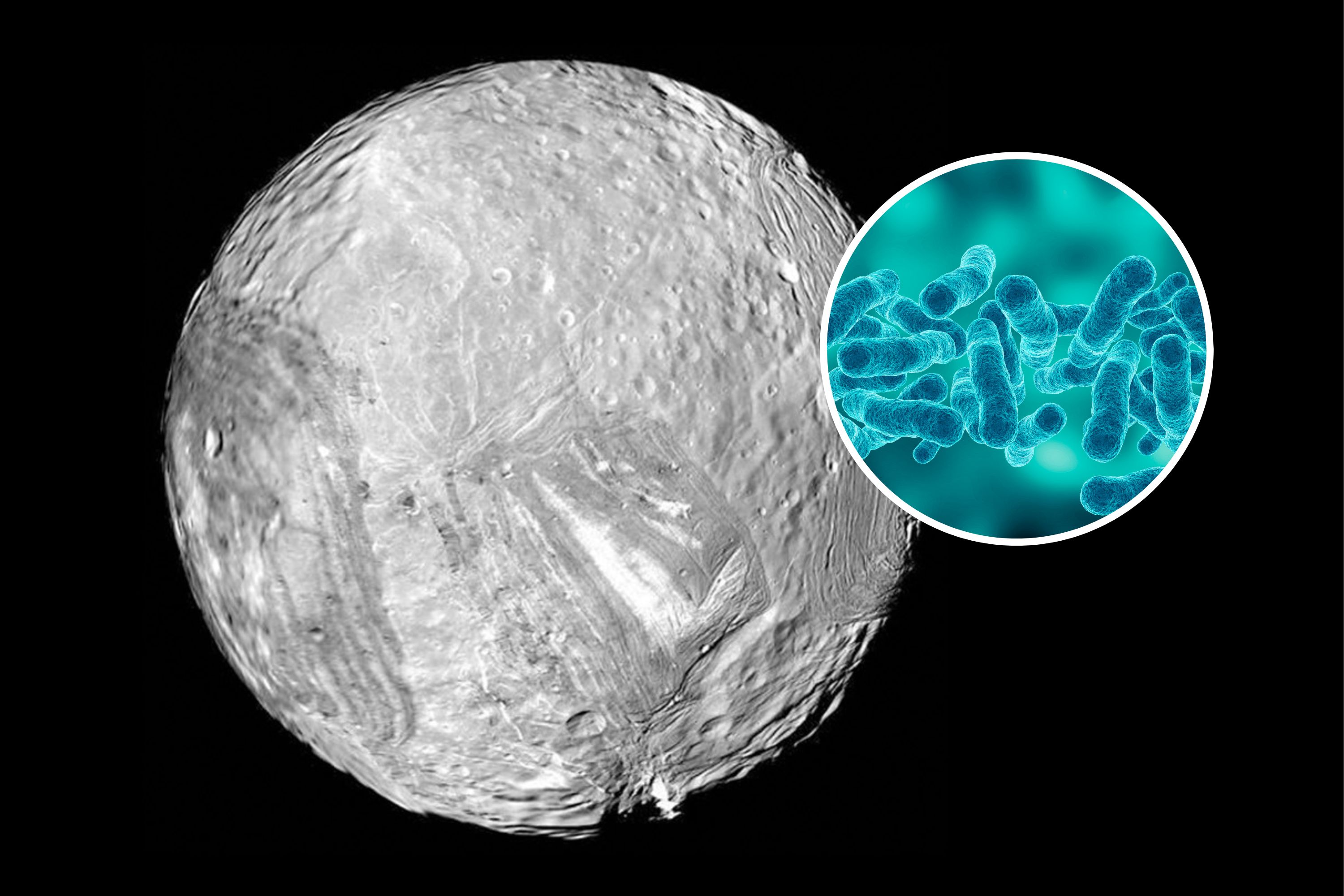Miranda, a small moon of Uranus, has become the focus of scientific intrigue with the revelation that it may contain a hidden ocean beneath its icy surface. Research published in The Planetary Science Journal indicates that this ocean could provide the conditions necessary for life.
“Finding evidence of an ocean in such a small body is incredibly surprising,” said Tom Nordheim, a planetary scientist at Johns Hopkins University, who co-authored the study. He added that this discovery suggests Uranus’ moons could be more intriguing than previously thought, possibly harboring several ocean worlds.

NASA/Jet Propulsion Laboratory-Caltech / ISTOCK / GETTY IMAGES PLUS
Uranus and Its Moons
Uranus hosts 28 known moons, with Miranda being the smallest among its largest. At around 290 miles in diameter, it features a varied landscape marked by canyons and cliffs, primarily composed of a mix of water ice and rock. The moon’s peculiar features likely stem from internal heating due to gravitational interactions within the Uranian system.
The latest study highlights a possible scenario where, between 100 to 500 million years ago, Miranda harbored a vast ocean beneath a thick icy crust, possibly extending to depths of 60 miles. The researchers modeled Miranda’s strange geological formations based on past gravitational interactions with Uranus, leading to the conclusion of this extensive subsurface ocean.
“This was a surprising result for the research team,” commented Caleb Strom, a graduate student involved in the study. Tidal forces between Miranda and its fellow moons likely contributed to heating the interior, melting frozen ice into liquid water—a phenomenon also observed in Jupiter’s moon Europa.
While the moons of Uranus have since lost their synchronized orbits that could maintain such an ocean, there’s speculation that liquid water might still persist below the surface.
“The potential for an ocean on one of the most distant moons in our solar system is remarkable,” said Strom.
Previously, Saturn’s moon Enceladus, known for its subsurface ocean, has emerged as a key candidate for life outside our planet. Its geological activity continues to intrigue scientists, drawing a comparison to Miranda’s potential.
As exciting as these findings are, more research is crucial. “Without additional data, we can’t confirm the existence of this ocean,” Nordheim explained, emphasizing the need for future missions to further explore Uranus and its moons.
Reference
Strom, C., Nordheim, T. A., Patthoff, D. A., & Fieber-Beyer, S. K. (2024). Constraining Ocean and Ice Shell Thickness on Miranda from Surface Geological Structures and Stress Modeling. The Planetary Science Journal, 5(10), 226. https://doi.org/10.3847/psj/ad77d7
